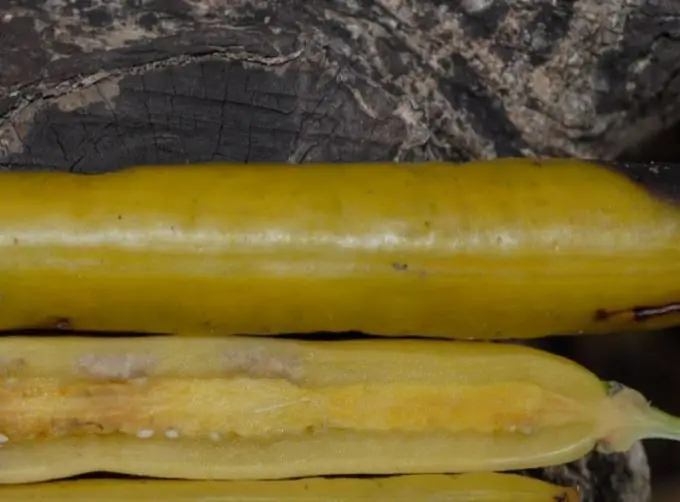- Author Nora Macey [email protected].
- Public 2023-12-16 10:17.
- Last modified 2025-01-23 08:48.
There are even two trees with such an unusual name in the world. The most famous is the edible parmentiera (Parmentiera cereifera) from South and Central America, but there are also Aleurites moluccana from the tropics of the New World.

Candle tree Aleurites moluccana
This tree got its unusual name because the oil content in its seeds is very high, and therefore it is used as candles in its homeland. This tree has become widespread thanks to man, and therefore it is not yet possible to establish exactly where his homeland is. It mainly grows in tropical forests, but it is also common in greenhouses and conservatories.
At home, the height of this tree is 15-20 m, at the top there is a wide crown with hanging branches, so the candle tree is somewhat reminiscent of a palm tree. Leaves are pale green, oval in shape and 10-20 cm long. The fruit of the candle tree is nuts, small and round, 4-6 cm, covered with a very hard shell. Inside each nut there is one seed, the oil content of which is very high. This seed is used as a candle in the birthplace of the candle tree.
The fruits are called differently: Indian walnuts, kemiri, varnish, kukui nut. These nuts are also used to make a thick sauce, which is served with vegetables and rice. Many parts of the tree are used in traditional medicine: seed oil stimulates hair growth and heals hair if it is weak and lifeless. The seeds themselves are used in the homeland as a laxative, and the leaves help in curing headaches. The bark of the candle tree is used to fight cancer in Japan.
Parmentiera edible
The parmentiere is called the candle tree because of its fruits, thin and long, which both in shape and color really resemble candles: they reach a meter in length. This tree is native to Panama. The fruits are eaten, and they taste like a very sweet apple, they are eaten raw or added to various salads that are common in those parts.
The edible parmentiere belongs to the genus of sausage trees, or bignonias, and many of the plants from this family have long fruits that resemble sausages. The tree itself is quite large, and its leaves resemble in appearance and structure a giant acacia. Flowers are pale, with bluish spots, sometimes white, and can reach half a meter in diameter, but most still do not exceed 15-20 cm. Flowers have a unique shape, unlike any of the other families. After pollination, the fruit begins to grow - up to a meter long, thin, round and pale yellow in color, reminiscent of a melted candle, bent from the heat under its own weight.
Another feature of the candle tree is that its fruits and flowers grow directly on the trunk, and not on the branches, as is the case with most other trees.






